In the world of programming, several languages dominate the market due to their high efficiency, wide application range, and rich feature sets. Among these languages, C stands out for its flexibility, efficiency, and near-universal applicability. One crucial element often overlooked in the mastery of this language is the C Language Flowchart. This visualization tool significantly enhances a programmer's comprehension of program structures and logic. It breaks down intricate procedures into understandable, step-by-step processes. The significance of the C Language Flowchart spans across various aspects, including benefits to programmers, symbols used, and why it's essential.
In this article, you’ll learn almost everything about C language flowchart, including steps to make one. Keep reading.
What Is a C Language Flowchart
A C Language Flowchart is a graphical representation of a C program's logic flow. Each operation within a program corresponds to a specific symbol on the flowchart. By connecting these symbols with arrows that indicate the path from one operation to another, a flowchart visualizes how data moves throughout a program, making it easier to understand and debug.

Understanding the flowchart's mechanics in computer science, especially the C language, equips a programmer with the ability to decipher complex programming concepts. The purpose of a flowchart in C language is not to replace actual coding but to provide a visual roadmap that guides the programmer through each step of code creation and troubleshooting.
Why Use a Flow Chart in C Language
The main reason to use a flowchart in C Language is to facilitate an easier understanding of program structure and flow. Just like any other coding language, C programming can get complex, particularly when dealing with intricate structures and algorithms. This is where a C Language Flowchart becomes vital.
The flowchart serves as a visual aid to understanding the steps involved in a process or system. A programmer can reference it while creating or debugging their program, leading to faster and more accurate code production. Moreover, the use of flowcharts promotes logical thinking and problem-solving skills that are essential for any software development project.
Benefits of C Language Flowchart
Implementing a C Language Flowchart in programming comes with numerous benefits:
- Enhanced Understanding: A flowchart's visual nature makes it easier for programmers to comprehend intricate procedures within the C language.
- Simplified Debugging: Flowcharts aid in identifying bugs within the system faster by highlighting areas where errors may occur.
- Improved Communication: Flowcharts enhance communication within a team, making it easier for team members to understand each other’s codes.
- Efficient Documentation: In addition to improving code comprehension, flowcharts serve as an efficient form of documentation that can be referenced by future developers.
C Language Flowchart Symbols
Various symbols represent different operations in a C Language Flowchart. Each symbol plays a specific role:
- Oval: Represents start and end points.

- Rectangle: Indicates a processing step.
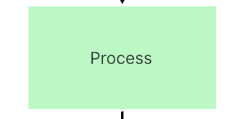
- Diamond: Used for decision-making operations.

- Parallelogram: Symbolizes input/output operations.

- Arrow Lines: Shows the direction of flow between different operations.

These symbols work together to create a comprehensive representation of a C program's flow, enhancing the programmer's understanding and efficiency.
How to Make a C Language Flow Chart in Boardmix
Boardmix is a popular tool used by programmers to create, collaborate, and share flowcharts for their programming projects. Its user-friendly interface and extensive set of features make it a go-to platform for designing C Language Flowcharts. Here is a step-by-step guide on how to make a C Language Flowchart in Boardmix.

Step 1: Launch Boardmix and Create a New Board
Firstly, open Boardmix on your browser and log into your account. If you do not have an account, you can sign up for one easily. Once logged in, navigate to the top-left corner and click on "New board" to create a new file.

Step 2: Choose Flowchart Template
Boardmix offers a variety of templates to kickstart your diagramming process. Under the templates options, select "Flowchart". This will provide you with a canvas with all the flowchart tools and symbols you will need to create your C Language Flowchart.
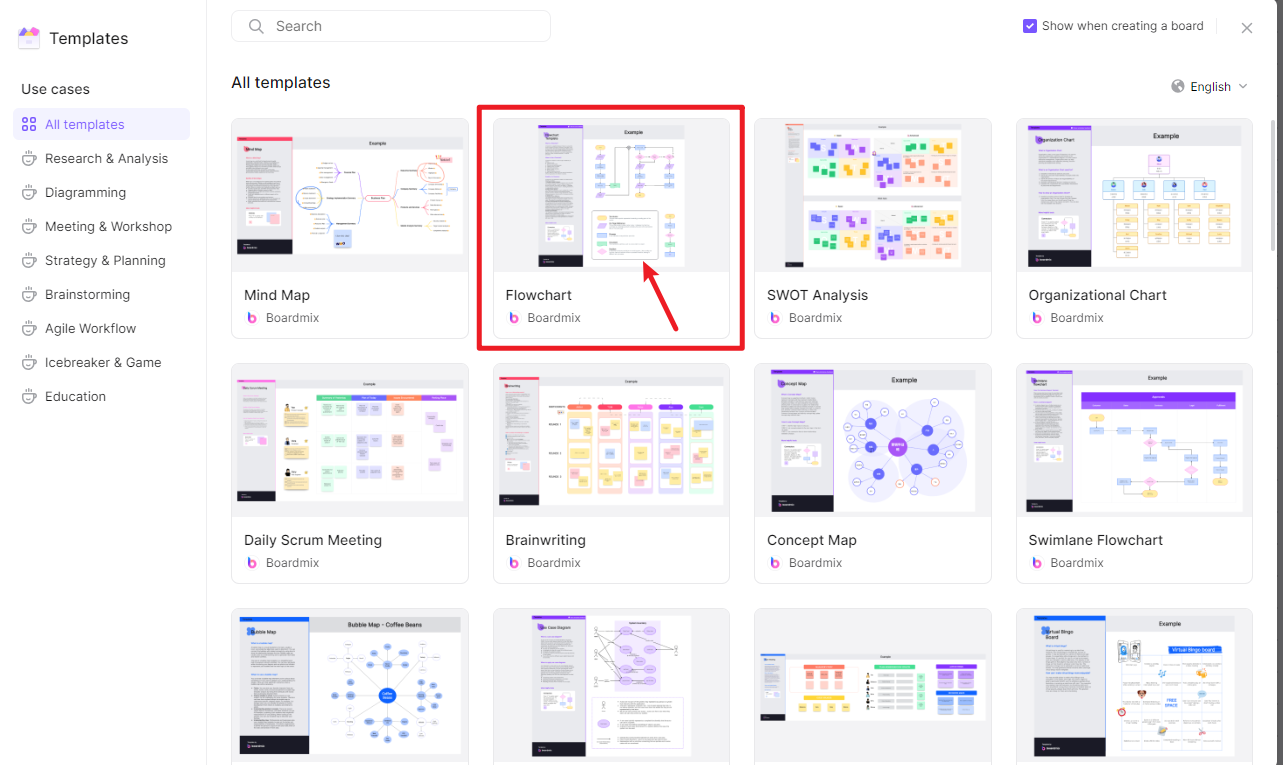
Step 3: Start Designing Your Flowchart
Now, you are ready to start designing your C Language Flowchart. Drag and drop the necessary symbols from the symbols menu onto your canvas. Connect these symbols with arrow lines to indicate the flow of control within your program.
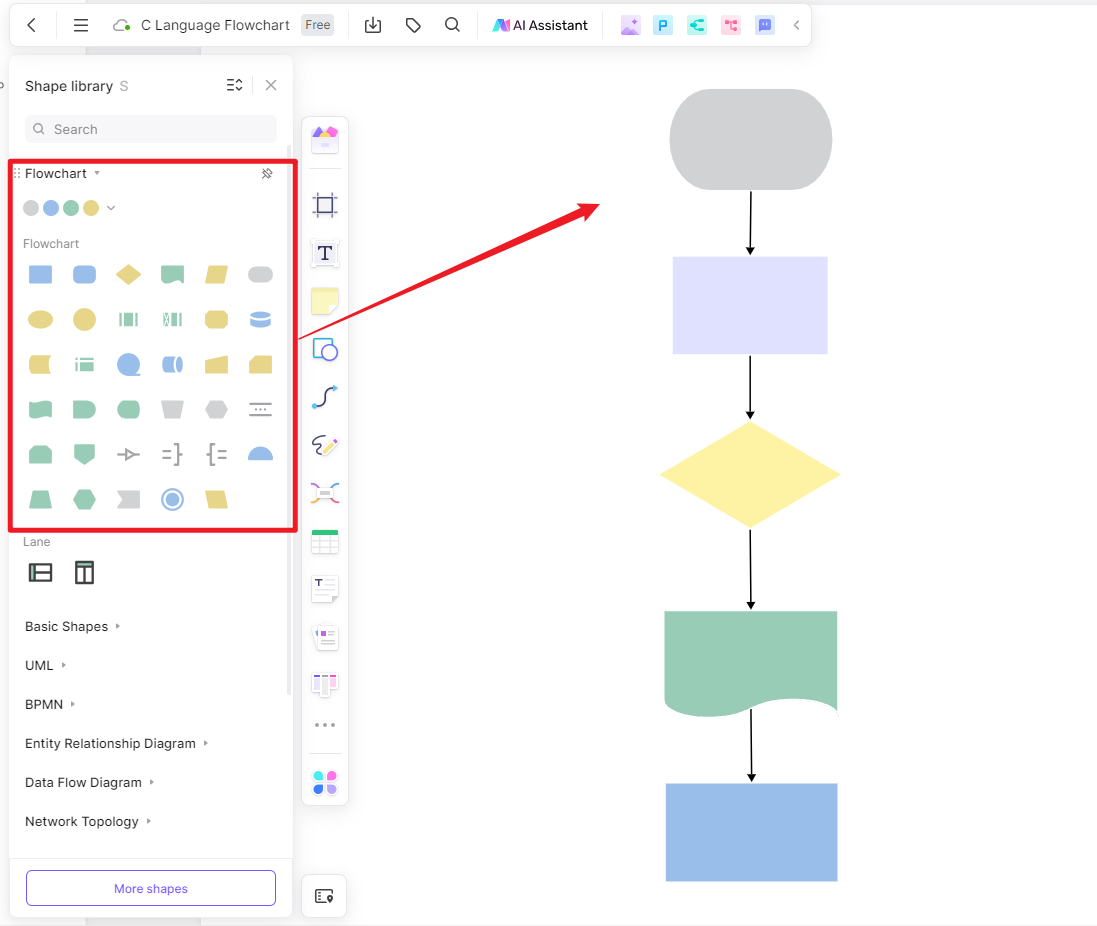
Step 4: Label Your Symbols
After you've positioned your symbols and connected them with arrows, it's time to label them. Double-click on each symbol and type the corresponding program action or decision. This labeling helps in understanding the actions associated with each symbol in the context of your program.
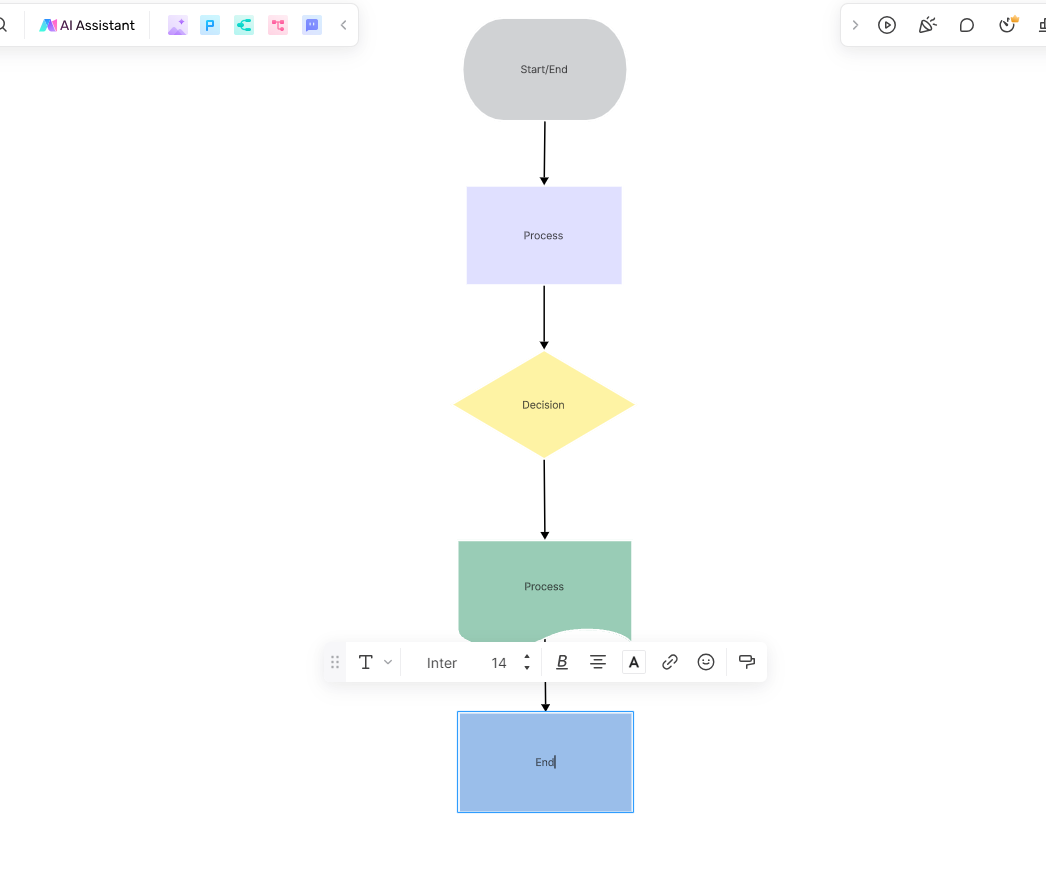
Step 5: Review and Edit Your Flowchart
Once you've completed the initial design and labeling process, review your flowchart for any potential mistakes or improvements. Use Boardmix's editing tools to rearrange symbols, reposition arrows, or update labels if necessary.
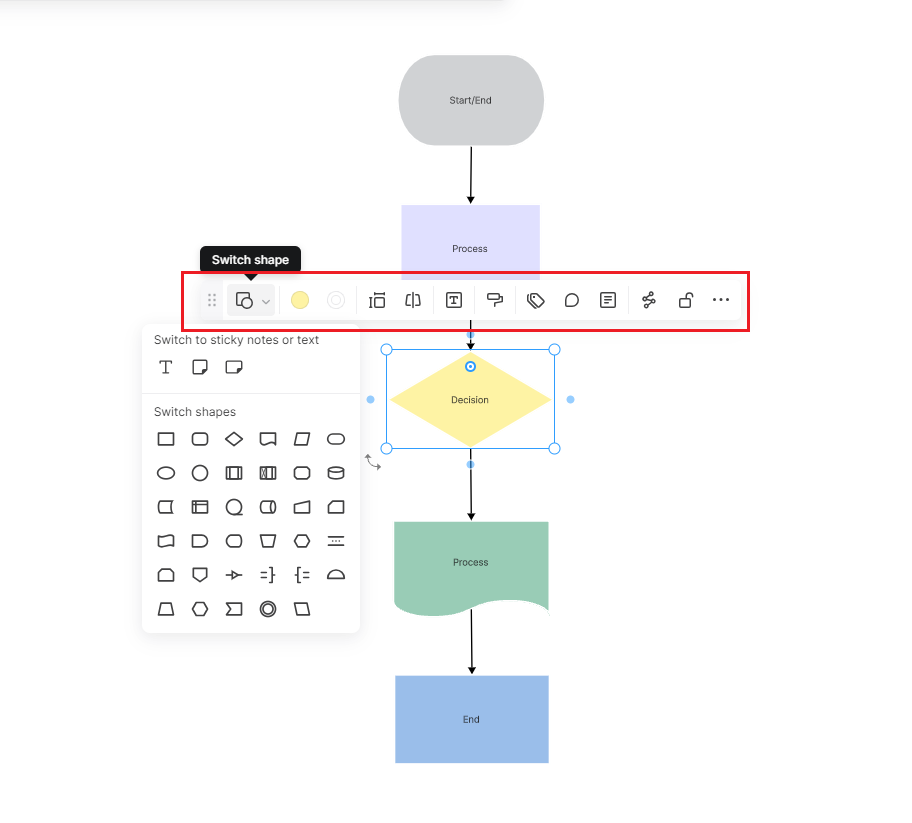
Step 6: Save and Share Your Flowchart
When you're satisfied with your flowchart design, share your flowcharts with team members. Click on the "Share" button at the top-right corner of the screen, and choose from the different sharing options available. You don’t need to worry about the data loss, Boardmix will save your file automatically in real time.
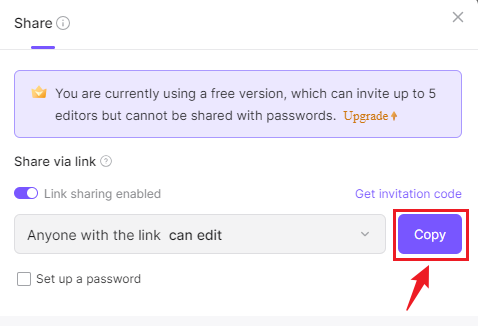
By following these steps, you can effectively use Boardmix to create your C Language Flowchart. This visual tool will greatly enhance your understanding of your program's structure, logic flow, and overall functionality. With continuous use, you'll find that your programming efficiency and code quality will significantly improve.
Tips and Tricks on Making a Flow Chart in C Language
Creating a flowchart for a C program is a beneficial step towards improving your code's understanding, debugging process, and general efficiency. To maximize the advantages of a C Language Flowchart, here are some helpful tips and tricks:
- Start with the Basics
When creating a flowchart for your C program, start with the primary operations first. Understand the flow of your program and depict this using simple symbols. You can elaborate on more complex parts of your code later on.
- Be Consistent with Your Symbols
Consistency is vital in flowchart creation. Make sure you're using the right symbols for the correct operation consistently throughout your chart. A mismatch or inconsistent use of symbols can lead to confusion.
- Follow the Top-to-Bottom, Left-to-Right Convention
Flowcharts follow a top-to-bottom and left-to-right convention for showing the direction of flow. Be sure to adhere to this convention to maintain the readability and understandability of your flowchart.
- Keep it Clear and Legible
Your flowchart should be easy to understand at a glance. Avoid cluttering your flowchart with too many details or using complex jargon in your labels.
- Use Sub-Flowcharts for Complex Processes
If your C program contains complex functions or procedures, consider creating sub-flowcharts for these parts. This approach can help avoid making your main flowchart overly complicated while providing a detailed view of the more complex parts of your code.
- Validate Your Flowchart
Once you've completed your flowchart, run through it using test data to see if the flow matches with what happens when you execute your code. This step will help validate that your flowchart accurately represents your program and helps identify any errors.
- Use a Good Flowchart Software
Good flowchart software like Boardmix, Visio, or Lucidchart can make the process of creating a C Language Flowchart easier and faster. They offer various tools, symbols, and templates that simplify the process and enhance the visual quality of your flowchart.
By incorporating these tips and tricks, you can create more effective flowcharts for your C programs. As a result, you'll have a powerful tool that aids in understanding, communicating, documenting, and improving your code.













